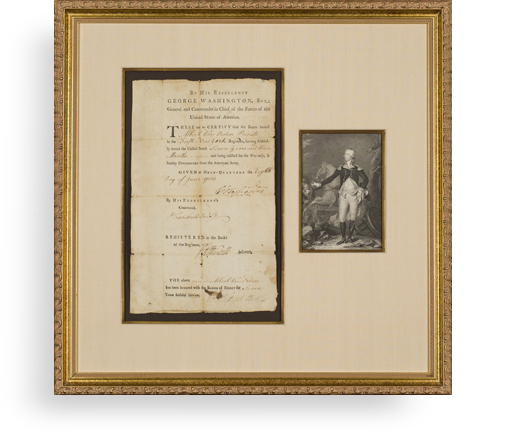The States Respond to President Thomas Jefferson’s Call for Troops Under the Insurrection Act


A dense archive of approximately 90 letters and documents, many very large and detailed, showing the ramp up of force in the summer of 1794 from one of the states, Rhode Island
- Currency:
- USD
- GBP
- JPY
- EUR
- CNY
In 1807, the United States Congress authorized President Thomas Jefferson to call up “one hundred thousand militia” from the...
Among these are individual documents of great historical importance for this event, as well as Secretary of War Dearborn’s signed receipt of the returns, from the archive of the descendants of the recipient
In 1807, the United States Congress authorized President Thomas Jefferson to call up “one hundred thousand militia” from the states. This action was taken in anticipation of potential conflict with Great Britain, which was interfering with American trade during the Napoleonic Wars. The act was part of the Insurrection Act of 1807, which allowed the president to use the militia for national defense, including the suppression of insurrection. The call-up was a response to British impressment of American sailors (boarding American vessels, taking American sailors and forcing them into the Royal Navy), and the seizure of American merchant ships.
Samuel Bridgham was at the time the Adjutant General of the State of Rhode Island.
Archive, approximately 90 letters and documents, Samuel Bridgham’s retained copies of these returns and his correspondence, July through December of 1807, the returns of men and arms from brigades and regiments from across the state, signed and transmitted by their various commanders. A few examples of the type of document included.
ALS, Henry Dearborn, Secretary of War, December 30, 1806,to Bridgham. “I have duly received the return of the militia for the State of RI…”
Document signed, December 16, 1807, Bridgham’s copy of “Return of all the military force for the state in the year 1807.”
Draft ALS Samuel Bridgham, Nov 3, 1807, calling on the commanders to heed President Jefferson’s call for a militia. “The President of the United States having required of the Executives of the several states their respective proportions of the Hundred Thousand militia including officers to be organized, equipped and held in readiness to march at a moment’s warning, for the necessary defence of this country, of which number 814 is the proportion of this state….”

Frame, Display, Preserve
Each frame is custom constructed, using only proper museum archival materials. This includes:The finest frames, tailored to match the document you have chosen. These can period style, antiqued, gilded, wood, etc. Fabric mats, including silk and satin, as well as museum mat board with hand painted bevels. Attachment of the document to the matting to ensure its protection. This "hinging" is done according to archival standards. Protective "glass," or Tru Vue Optium Acrylic glazing, which is shatter resistant, 99% UV protective, and anti-reflective. You benefit from our decades of experience in designing and creating beautiful, compelling, and protective framed historical documents.
Learn more about our Framing Services










































































































